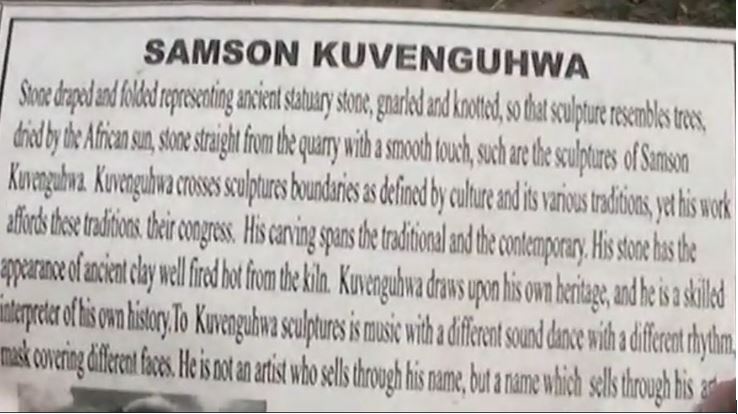Sampson Kuvenguhwa's Mapiti Style
Sampson Kuvenguhwa's unique Mapiti style is a personalized reflection of actual scenes from life, showcasing modern art Shona sculpture at its best. The signature features of the Mapiti style include straight lines, beautifully rounded parts, intricate detailing of the face and body, and impeccably formed hands and feet, often with three or four toes or fingers carved. The consistency in the style is evident in every piece, while Sam subtly shifts his style over the years, demonstrating his remarkable artistic skill and versatility. The Mapiti style is a testament to Sam's deep-rooted connection to Shona culture and his ability to translate it into breathtaking works of art. Join us on a journey of discovery and inspiration, as we explore the profound meaning behind Sam's work and the unique qualities that make his Mapiti style so special. He signs most of his pieces 'Sam Kuve'.
We hope you enjoy our collection which we have named after the style of Sam Kuve (Sampson Kuvenguhwa) namely Mapiti!
(in case the folloiwng Video is not downloaded and automatically shown, and it is mentioned that it is blocked by GDPR, kindly click on it. Cookies window will open and you should again accept the cookies after which the Video can be opened and played.) What is GDPR?
The text as shown in the Video:
Stone draped folded representing ancient statuary stone, gnarled and knotted, so that sculpture resembles trees, dried by the African sund, stone straight from the quarry with a smooth touch, such are the sculptures of Samson Kuvenguhwa. Kuvenguhwa crosses sculptures boundaries as defined by culture and its various traditions, yet his work affords these traditions, their congress. His carving spans the traditional and the contemporary. HIs stone has the appearance of ancientt clay well fired hot from the kiln. Kuvenguhwa draws upon his heritage, and he is skilled interpreter of his own history. To Kuvenguhwa sculptures is music with a different sound dance with a different rhythm, mask covering different faces. He is not an artist who sells through his name, but a name which sells through his art.
Sam's explanation of Mapiti (seen in the video)
Mapiti is a big mountain divided by the river. This is where people rushed to hide during the war of Matabeleland and Mashonaland. So the word Mapiti is the sound of many people going to hide just like my works, it is more in one piece.
Further reading: Influence of Shona Art on Picasso

